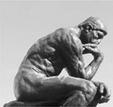Criminological Theory: Context and Consequences Seventh Edition
Visit to download the full and correct content document: https://ebookmass.com/product/criminological-theory-context-and-consequences-sev enth-edition/
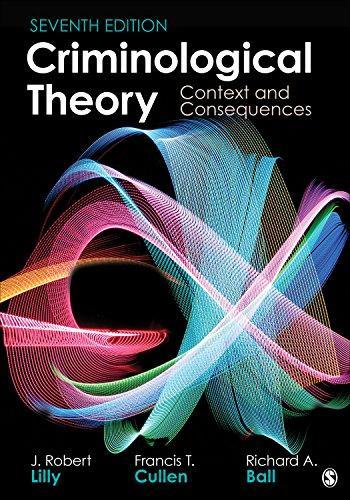
More products digital (pdf, epub, mobi) instant download maybe you interests ...

Criminological Theory: Context and Consequences 7th Edition, (Ebook PDF)
https://ebookmass.com/product/criminological-theory-context-andconsequences-7th-edition-ebook-pdf/
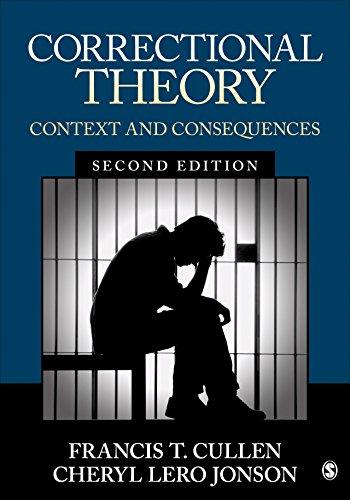
Correctional Theory: Context and Consequences (NULL) 2nd Edition, (Ebook PDF)
https://ebookmass.com/product/correctional-theory-context-andconsequences-null-2nd-edition-ebook-pdf/
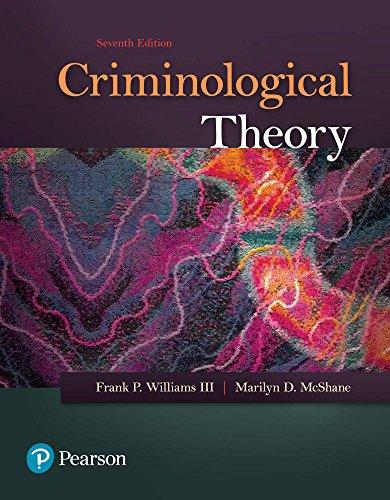
Criminological Theory 7th Edition, (Ebook PDF)
https://ebookmass.com/product/criminological-theory-7th-editionebook-pdf/
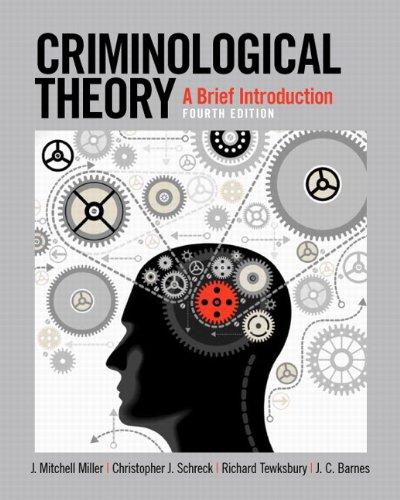
Criminological Theory: A Brief IntroductionA Brief Introduction – Ebook PDF Version
https://ebookmass.com/product/criminological-theory-a-briefintroductiona-brief-introduction-ebook-pdf-version/
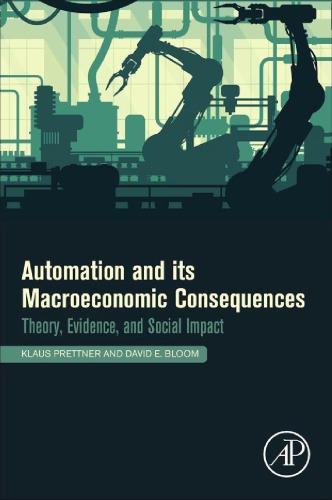
Automation And Its Macroeconomic Consequences: Theory, Evidence, And Social Impacts 1st Edition Edition Klaus Prettner
https://ebookmass.com/product/automation-and-its-macroeconomicconsequences-theory-evidence-and-social-impacts-1st-editionedition-klaus-prettner/
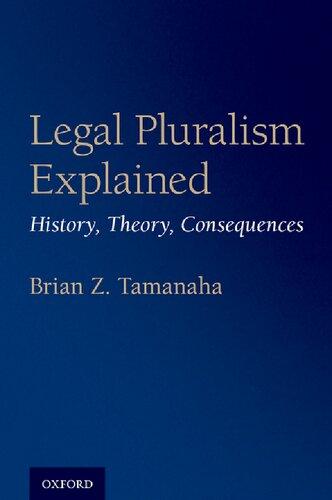
Legal Pluralism Explained: History, Theory, Consequences Brian Z. Tamanaha
https://ebookmass.com/product/legal-pluralism-explained-historytheory-consequences-brian-z-tamanaha/
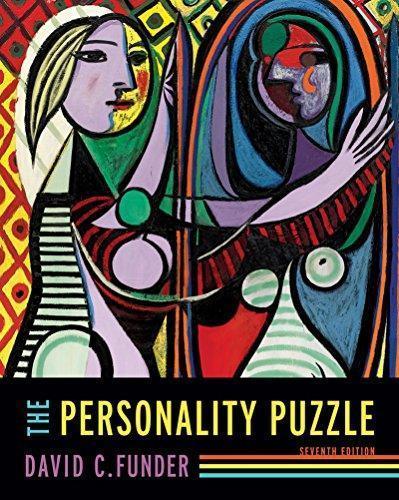
The Personality Puzzle (Seventh Edition ) Seventh Edition
https://ebookmass.com/product/the-personality-puzzle-seventhedition-seventh-edition/
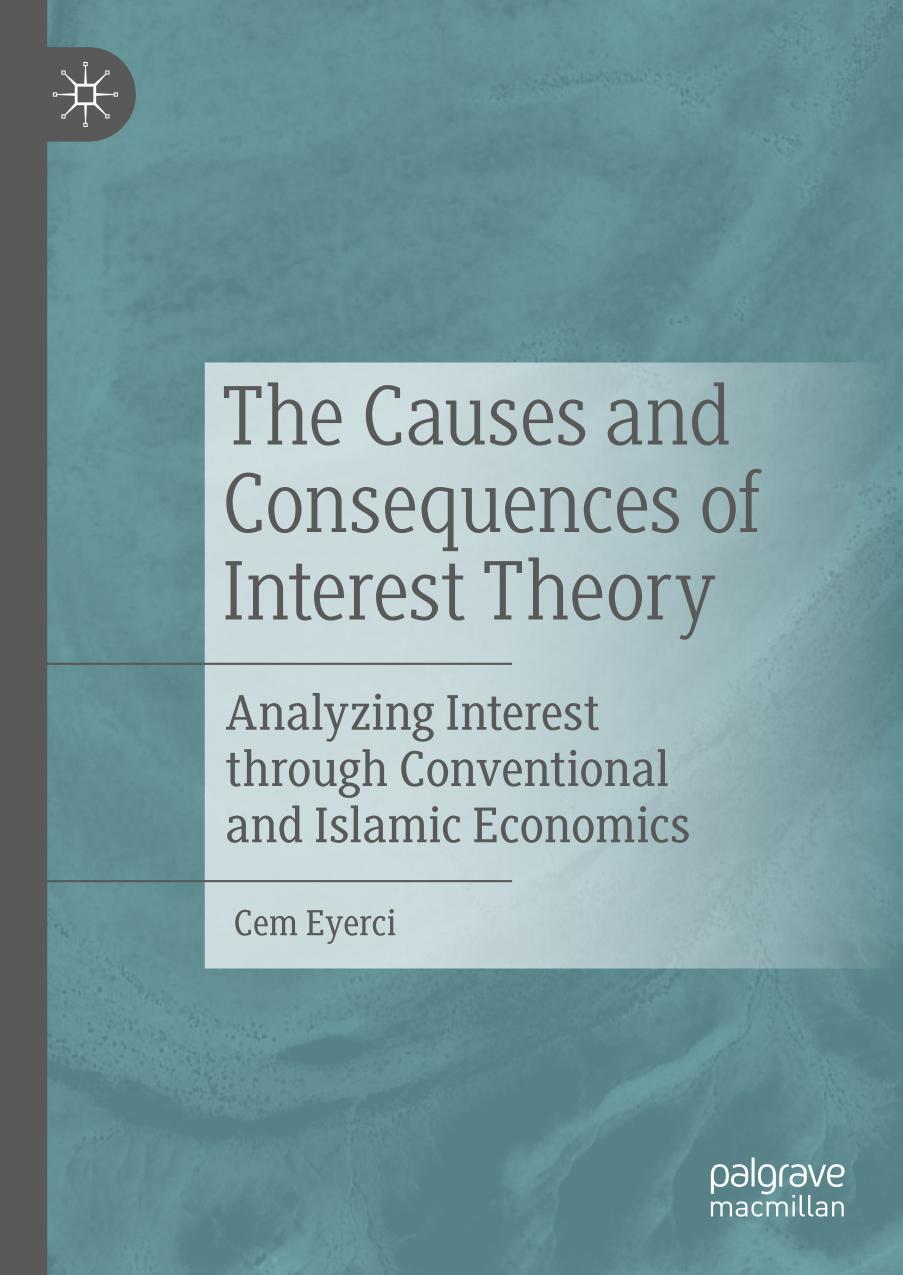
The Causes and Consequences of Interest Theory: Analyzing Interest through Conventional and Islamic Economics Cem Eyerci
https://ebookmass.com/product/the-causes-and-consequences-ofinterest-theory-analyzing-interest-through-conventional-andislamic-economics-cem-eyerci/
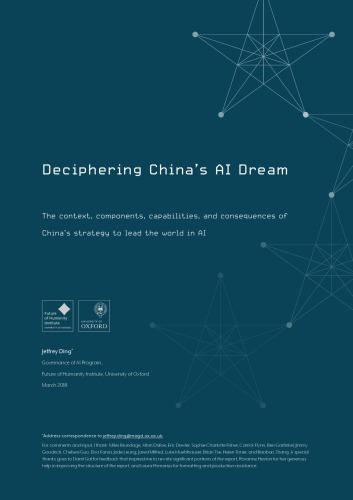
Deciphering China’s AI Dream. The context, components, capabilities, and consequences of China’s strategy to lead the world in AI Jeffrey Ding
https://ebookmass.com/product/deciphering-chinas-ai-dream-thecontext-components-capabilities-and-consequences-of-chinasstrategy-to-lead-the-world-in-ai-jeffrey-ding/
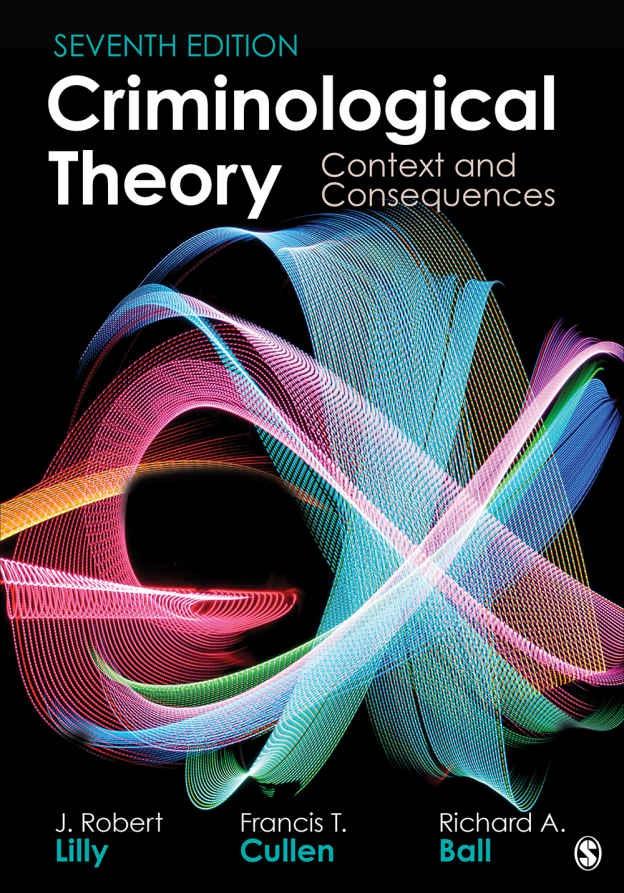
DetailedContents
Preface
Acknowledgments
•CHAPTER1TheContextandConsequencesofTheory
TheoryinSocialContext
TheoryandPolicy:IdeasHaveConsequences
Context,Theory,andPolicy:PlanoftheBook
InventingCriminology:MainstreamTheories
SocialTurmoilandtheRiseofCriticalTheories
CriminologicalTheoryintheConservativeEra
CriminologicalTheoryinthe21stCentury
Conclusion
FurtherReadings
•CHAPTER2TheSearchforthe“CriminalMan” Spiritualism
TheClassicalSchool:CriminalasCalculator
ThePositivistSchool:CriminalasDetermined
TheBirthofthePositivistSchool:Lombroso’sTheoryoftheCriminalMan
Lombroso’sLegacy:TheItalianCriminologicalTradition
TheContinuingSearchfortheIndividualRootsofCrime
TheConsequenceofTheory:PolicyImplications
ThePositivistSchoolandtheControloftheBiologicalCriminal ThePositivistSchoolandCriminalJusticeReform
Conclusion
FurtherReadings
•CHAPTER3RejectingIndividualism:TheChicagoSchool
TheChicagoSchoolofCriminology:TheoryinContext
ShawandMcKay’sTheoryofJuvenileDelinquency
Burgess’sConcentricZoneTheory DisorganizationandDelinquency
TransmissionofCriminalValues
TheEmpiricalStatusofSocialDisorganizationTheory Summary
Sutherland’sTheoryofDifferentialAssociation DifferentialSocialOrganization
DifferentialAssociation
TheoreticalApplications
TheChicagoSchool’sCriminologicalLegacy
ControlandCultureintheCommunity
CollectiveEfficacyTheory
CulturalAttenuationTheory
CulturalDevianceTheory
Anderson’sCodeoftheStreet
Akers’sSocialLearningTheory
BecomingaLearningTheorist
ExtendingSutherland:Akers’sTheory
AssessingSocialLearningTheory
TheConsequencesofTheory:PolicyImplications
ChangetheIndividual
ChangetheCommunity
Conclusion
FurtherReadings
•CHAPTER4CrimeinAmericanSociety:AnomieandStrainTheories
Merton’sStrainTheory
AmericaasaCriminogenicSociety
StrainTheoryinContext
StatusDiscontentandDelinquency
DelinquentBoys
DelinquencyandOpportunity
TheCriminologicalLegacyof“Classic”StrainTheory
Agnew’sGeneralStrainTheory
BecomingaStrainTheorist
ThreeTypesofStrain
CopingWithStrain
AssessingGeneralStrainTheory
TwoTheoreticalExtensions
ATheoryofAfricanAmericanOffending
CrimeandtheAmericanDream:Institutional-AnomieTheory
InventingInstitutional-AnomieTheory
TheAmericanDreamandAnomie
InstitutionalBalanceofPower
AssessingInstitutional-AnomieTheory
TheMarketEconomyandCrime
TheFutureofStrainTheory
TheConsequencesofTheory:PolicyImplications
ExpandOpportunities
TamingtheAmericanDream
Conclusion
FurtherReadings
•CHAPTER5SocietyasInsulation:TheOriginsofControlTheory
ForerunnersofControlTheory
Durkheim’sAnomieTheory
TheInfluenceoftheChicagoSchool
EarlyControlTheories
Reiss’sTheoryofPersonalandSocialControls
Nye’sFamily-FocusedTheoryofSocialControls
Reckless’sContainmentTheory
TheSocialPsychologyoftheSelf PushesandPulls
FactorsinOuterContainment
FactorsinInnerContainment
Summary
SykesandMatza:NeutralizationandDriftTheory TechniquesofNeutralization
SubterraneanValues
DriftTheory
ControlTheoryinContext
TheContextofthe1950s
TheContextofthe1960s
FurtherReadings
•CHAPTER6TheComplexityofControl:Hirschi’sTwoTheoriesandBeyond
Hirschi’sFirstTheory:SocialBondsandDelinquency
Hirschi’sForerunners
Hirschi’sSociologicalPerspective
WhySocialControlMatters
TheFourSocialBonds
AssessingSocialBondTheory
Hirschi’sSecondTheory:Self-ControlandCrime
Self-ControlandCrime
AssessingSelf-ControlTheory
Self-ControlandSocialBonds
Hirschi’sRevisedSocialControlTheory
Self-ControlandVulnerabilitytoVictimization
TheComplexityofControl
Hagan’sPower-ControlTheory
Tittle’sControlBalanceTheory
Colvin’sDifferentialCoercionTheory
BeyondControl:Cullen’sSocialSupportTheory
TheConsequencesofTheory:PolicyImplications
Conclusion
FurtherReadings
•CHAPTER7TheIronyofStateIntervention:LabelingTheory TheSocialConstructionofCrime
LabelingasCriminogenic:CreatingCareerCriminals
EarlyStatementsofLabelingTheory
LabelingasaSelf-FulfillingProphecy
AssessingLabelingTheory
LabelingTheoryinContext
TheConsequencesofTheory:PolicyImplications
Decriminalization
Diversion
DueProcess
Deinstitutionalization
ExtendingLabelingTheory
Braithwaite’sTheoryofShamingandCrime
Sherman’sDefianceTheory
Tyler’sProceduralJusticeTheory
RoseandClear’sCoercedMobilityTheory
PolicyImplications:RestorativeJusticeandPrisonerReentry
Conclusion
FurtherReadings
•CHAPTER8SocialPowerandtheConstructionofCrime:ConflictTheory ForerunnersofConflictTheory
MarxandEngels:CapitalismandCrime
Simmel:FormsofConflict
Bonger:CapitalismandCrime
SutherlandandSellin:CultureConflictandCrime
Vold:ConflictandCrime
TheoryinContext:TheTurmoilofthe1960s
AdvancingConflictTheory:Turk,Chambliss,andQuinney
Turk:TheCriminalizationProcess
Chambliss:Crime,Power,andLegalProcess
Quinney:SocialReality,Capitalism,andCrime
ConflictTheoryandtheCausesofCrime
ConsequencesofConflictTheory
MarxistApproach
PeacemakingCriminology
Conclusion
FurtherReadings
•CHAPTER9TheVarietyofCriticalTheory
LookingBackatEarlyBritishandEuropeanInfluences
Background:TheNewCriminology
TheoreticalArguments
CritiqueoftheNewCriminology
EarlyLeftRealism
TheTheory
ConsequencesofNewCriminology/LeftRealism
TheNewCriminologyRevisited:AShiftinContext
LeftRealismToday
TakingStock
LateModernityandGlobalization:MajorHistoricalChanges
ChangingSocialContext:2015–2018
EarlyCulturalCriminology
TheBeginning
ConsequencesofEarlyCulturalCriminology
CulturalCriminologyToday
Green/CulturalCriminology
BackgroundandEmergenceofGreenCriminology
EnvironmentalJustice
EcologicalJustice
AnimalRights
Convict/CulturalCriminology
Background:PrimarilyanAmericanContribution
Consequencesofthe“NewSchoolofConvictCriminology”
NewDirectionsinCriminologicalTheory:DeathandtheBirthofNewIdeas
BackgroundandTransition
Hall’sNewPerspective:2012–2018
Ultra-RealismToday
TheImportanceofOtherVoices:JockYoung EuropeanCriminology
ContributionsandContent:Background
PolicyUpdate
Abolitionism
ConsequencesofAbolitionism
Conclusion
FurtherReadings
•CHAPTER10TheGenderingofCriminology:FeministTheory
Background
PrefeministPioneersandThemes
CesareLombroso
W.I.Thomas
SigmundFreud
OttoPollak
TheEmergenceofNewQuestions:BringingWomenIn
TheSecondWave:FromWomen’sEmancipationtoPatriarchy Women’sEmancipationandCrime
PatriarchyandCrime
VarietiesofFeministThought
EarlyFeministPerspectives
ContemporaryFeministPerspectives
TheIntersectionofRace,Class,andGender
MasculinitiesandCrime
DoingGender
MalePeerSupportTheory
GenderingCriminology
GenderedPathwaystoLawbreaking
GenderedCrime
GenderedLives
AGenderedTheoryofOffending
TheGenderGap:FurtherComments
PostmodernistFeminismandtheThirdWaveRevisited
ConsequencesofFeministTheory:PolicyImplications
ConsequencesoftheDiversityofFeministPerspectives
ConsequencesofFeministCriminologyforCorrections
ConsequencesofFeministCriminology:BackgroundandNewDirections
Conclusion
FurtherReadings
•CHAPTER11CrimesofthePowerful:TheoriesofWhite-CollarCrime
TheDiscoveryofWhite-CollarCrime:EdwinH.Sutherland
ThePhiladelphiaAddress
BecomingtheFatherofWhite-CollarCrime
DefiningWhite-CollarCrime
ExplainingWhite-CollarCrime
OrganizationalCulture
UnethicalCultures
OppositionalCultures
TheNormalizationofDeviance
OrganizationalStrainandOpportunity
StrainandAnomie
CriminogenicOpportunities
DecidingtoOffend
DenyingtheGuiltyMind
White-CollarCrimeasaRationalChoice
White-CollarOffendersasBadApples
State-CorporateCrime
ConsequencesofWhite-CollarCrimeTheory:PolicyImplications
Conclusion
FurtherReadings
•CHAPTER12BringingPunishmentBackIn:ConservativeCriminology
Context:TheUnitedStatesofthe1980sandEarly1990s
TheEconomicDeclineoftheUnitedStates
ThePersistenceofInequalityintheUnitedStates
TheRhetoricofStability
TheLegacyoftheConservativePoliticalAgenda
ANewContextinFourParts:2008to2019
TheNewConservatism,ShockDoctrine,andDarkMoney
TheWaronTerrorandtheRiseofHateCrimes
ThePrecariousnessoftheRuleofLaw
BigDataandSurveillance
OtherRecentChangesinContext
TheGreatRecession
InequalityExpandsintheUnitedStates
TheRhetoricofHopeandChange
TheRhetoricof“MakeAmericaGreatAgain”
LawandOrderIssuesUnderTrump
VarietiesofConservativeTheory
CrimeandHumanNature:WilsonandHerrnstein
TheTheory
AssessingCrimeandHumanNature
CrimeandTheBellCurve:HerrnsteinandMurray TheCriminalMind
ChoosingtoBeCriminal:CrimePays
CrimeandMoralPoverty
BrokenWindows:TheToleranceofPublicDisorganization
ConsequencesofConservativeTheory:PolicyImplications
TheEmbraceofMassImprisonment
IncapacitatingtheWicked
“GetTough”Alternatives
Conclusion
FurtherReadings
•CHAPTER13ChoosingCrimeinEverydayLife:RoutineActivityandRationalChoiceTheories
RoutineActivityTheory:OpportunitiesandCrime
TheChemistryforCrime:Offenders,Targets,andGuardians
ViewofOffenders
PolicyImplications:ReducingOpportunitiesforCrime
RationalChoiceTheory
RationalChoiceandCrime
PolicyImplications
AreOffenders’ChoicesRational?
PerceptualDeterrenceTheory
TheTheory
AssessingPerceptualDeterrenceTheory
PolicyImplications:Certainty,NotSeverity
SituationalActionTheory
Conclusion
FurtherReadings
•CHAPTER14TheSearchforthe“CriminalMan”Revisited:BiosocialTheories
EvolutionaryPsychology:DarwinRevisited
TheoreticalDiversity
Assessment
SocialConcernTheory:EvolutionaryPsychologyRevisited Neuroscience:NeurologicalandBiochemicalTheories
NeurologicalTheories
BiochemicalTheories
Assessment
Genetics
BehaviorGenetics
MolecularGenetics
Epigenetics
Assessment
Conclusion
FurtherReadings
•CHAPTER15NewDirectionsinBiosocialTheory:PerspectivesandPolicies
BiosocialRiskandProtectiveFactors
RiskFactors
ProtectiveFactors
EnvironmentalToxins
TheConsequencesofTheory:PolicyImplications
AnAgendaforResearchandPolicy
ImplicationsforPreventionandTreatment
ProblemsofDefinitionandtheSocialConstructionofCrime ChallengesAhead
Conclusion
FurtherReadings
•CHAPTER16TheDevelopmentofCriminals:Life-CourseTheories IntegratedTheoriesofCrime IntegratedTheorizing ElliottandColleagues’IntegratedStrain-ControlParadigm Thornberry’sInteractionalTheory HawkinsandCatalano’sSocialDevelopmentModel Farrington’sICAPTheory PolicyImplications
Life-CourseCriminology:ContinuityandChange CriminologyinCrisis:GottfredsonandHirschiRevisited Patterson’sSocial-InteractionalDevelopmentalModel Early-OnsetDelinquency Late-OnsetDelinquency InterveningWithFamilies
Moffitt’sLife-Course-Persistent/Adolescence-LimitedTheory Life-Course-PersistentAntisocialBehavior Adolescence-LimitedAntisocialBehavior AssessingMoffitt’sTheory
SampsonandLaub:SocialBondTheoryRevisited AnAge-GradedTheoryofInformalSocialControl AssessingSampsonandLaub’sLife-CourseTheory RevisingtheAge-GradedTheoryofCrime RethinkingCrime:CognitiveTheoriesofDesistance Maruna’sTheoryofRedemptionScripts Giordanoetal.’sTheoryofCognitiveTransformation PaternosterandBushway’sTheoryoftheFearedSelf TheConsequencesofTheory:PolicyImplications
Conclusion
FurtherReadings
References
AuthorIndex
SubjectIndex
AbouttheAuthors
Preface
Theideaforthisbookwasbirthedduringthemid-1970swhentheUnitedStatesandcriminologyonboth sidesoftheAtlanticwereexperiencingimmensechanges Betweenthattimeandtheappearanceofthefirst editionofthebookin1989,muchofourindividualenergiesweredevotedtoestablishingandmaintainingour careersandtoourchangingfamilyresponsibilities Attimes,itseemedasthoughthecircumstancesneededto sustainthetypeofcollectiveeffortrequiredforCriminologicalTheoryweresoelusiveastopreventthebook fromeverbeingwritten.Yet,theideaofabookthatwentbeyondexplainingcriminologicaltheory onethat usedasociologyofknowledgeperspectivetoexplaintheorigins,developments,andconsequencesof criminologicaltheory remainedverymuchalive Wewerecertainthatfewworkslikeitincriminologyhad beenwrittenbefore.Thenandnow,wewerecommittedtodemonstratingthatideasaboutthecausesofcrime haveconsequences
CriminologicalTheory,whichhasbeenanongoingprojectformostofourcareers,isnowinitsseventhedition andiscelebratingits30thanniversary!Duringthistime,thebookhasmorethandoubledinsize afactthat reflectsboththeincreasingrichnessoftheorizingaboutcrimeandoureffortstoaddsubstantivevalueaswe authoredeachnewedition Thus,thesecondeditionin1995includedempiricalupdates,substantial rewriting,andanewchapterdevotedtofreshdirectionsincriticalthinkingaboutcrime.Theemphasisona sociologyofknowledgeperspectiveremainedthesame.Thethirdedition,whichappearedin2002,attempted tocapturenoveltheoreticaldevelopmentsthathadoccurredwithinbothmainstreamandcriticaltheoretical paradigms.Thefourthedition,publishedin2006,expandedthebookfrom9to14chaptersandidentified newtheoreticaltrendsintheUnitedStatesandinEurope.Thefifthedition,setforthin2011,containeda newchapteronwhite-collarcrime atheoreticaldomainthatisoftenignored Publishedin2015,thesixth additionexpandedcoverageofbiosocialtheorytotwochapters,reflectingthegrowthofthisperspective,and addedcoverageofemergingframeworks,suchasgreencriminology,malepeersupporttheory,andsocial concernandsocialsupporttheories
Collectively,thethreeofushavespentmorethan140yearsasprofessorsstudyingcriminologicaltheory We werefortunatetohaveembarkedonourscholarlycareerswhencriminologywasemergingasavitaldiscipline onbothsidesoftheAtlantic Duringthistime,theoryhasremainedcentraltothecriminologicalenterprise Asourcareersprogressed,wewitnessedfoundationaltheories suchastheChicagoschool,Merton’ssocial structureandanomieparadigm,andcontroltheory exertenduringinfluence.Butreflectingachangingsocial contextandthegrowingdiversityofthefield,weheardnew,morecriticalvoicesthatofferedalternative visionsofthesourcesofandcuresforcrime Acrossalleditionsofthebook,ourgoalhasbeentochronicle eachchapterofthisunfoldingandfascinatingstory,givingcoveragetoallinfluentialperspectivesandtreating eachwithanappropriatelevelofcriticalanalysisandultimatelyrespect
Overthepastdecadeorso,criminologyhaslostanumberofprominentscholars including,amongothers, WilliamChambliss,GilbertGeis,TravisHirschi,RolfLoeber,F.IvanNye,RaymondPaternoster,Rita Simon,andAustinTurkintheUnitedStatesandStanleyCohen,BarbaraHudson,TerenceMorris,Geoffrey
Pearson,andJockYoungintheUnitedKingdom.Theirpassing andthatofothersbeforethem has remindedusofhowfortunatewehavebeeninourcareerstohaveexperiencedtheinordinatecontributionsof remarkablecriminologists Infact,wenotonlyhavereadtheirwritingsbutalsohaveknownpersonallymany ofthesewonderfulpeoplewhoshapedthinkingwithincriminology.Atthesametime,theirpassingalsomade clearthatcriminologyasadisciplineisadynamic,ever-changingfield burdenedbythelossesofgreatminds butalsobenefitedbythecreationofnewknowledgethatimprovesourunderstandingbothoftheoriginsof criminalbehaviorandofwhatdoesanddoesnotworktocontrolcrime.
Inthiscontext,weareprivilegedtohavethecontinuingopportunitytochroniclethemajoradvanceswithin criminologicaltheory,rangingfrombiosocialtocriticalcriminology Aswitheachpreviousrevision,we updatedmaterialsandsoughttomakethebookmoreinformative,interesting,andaccessible.Herearethe mostimportantchangesthatwehaveincludedintheseventhedition:
DiscussionofimportantchangesinthecontemporarysocialcontextintheUnitedStatesandinEurope, asnationshavemovedintoaneramarkedbytheelectionofDonaldTrumpandBrexit.
Updatedstatisticsandinformationaboutsignificantchangesincrime,imprisonment,andpolicy
Expandedcoverageofimportantperspectives,includingsubterraneanvaluesanddelinquency,lowselfcontrolasanexplanationofvictimization,proceduraljusticetheory,personalitytraitsandwhite-collar offending,placemanagementtheory,thesocialdevelopmentmodel,andthefearedselftheoryof desistance
Expandedcoverageofnewdirectionsinandthepolicyconsequencesofcriticalandfeministtheory. Theinclusionofmorethan400newsourcesthatassessdevelopmentswithin,andtheempiricalstatus of,themajortheories
Examinationoftheimplicationofbiosocialcriminology,especiallyneuroscience,foroffendertreatment andjuvenilejusticepolicy
Becausecriminologyisanevolvingfieldofstudy,weareconvincedthatthecontentsoftheshiftingcontexts ofthesocialworldfromwhichcriminologycomeswillcontinuetoinfluenceitstheoreticalexplanationsfor crimeandthepolicyresponsestoit.Itisourhope,however,thatcriminologyneverwillbeamerereflection oftheworldaroundit
TherearefartoomanypeopletowhomweowedebtsforthesuccessofCriminologicalTheorytobeproperly thankedhere.Forthisreason,wementiononlythree.First,thelateJamesA.Inciardi,whogaveusthe opportunitytowriteforSAGEPublications,deservesourgratitudeforhisfaithinoureffortsandpatience whenitseemedasthoughthefirsteditionneverwouldseethelightofday Second,JerryWestby,ourpast andlong-standingSAGEeditor,showedunwaveringconfidenceinourprojectacrossmultipleeditions, alwaysprovidingjusttherightdollopofsupportandwiseadvicetoenableustobringourworktofruition Third,JessicaMiller,ourcurrentSAGEeditorandprotégéofJerry,hasdisplayedremarkableenthusiasmfor thisproject,makingpossibleawonderfulworkingrelationship.WelookforwardtocollaboratingwithJessica onthebook’seightheditionandbeyond!
Finally,wewanttoexpressourappreciationtothemanycriminologists andtheirstudents whohave
embracedoureffortstotellthestoryofthedevelopmentofcriminologicaltheory.Withoutyourcontinued support,CriminologicalTheorywouldnotbeinitsseventhedition Ithasbeenaprivilegetoshareourideas withyou.
J.RobertLilly
FrancisT Cullen
RichardA Ball

